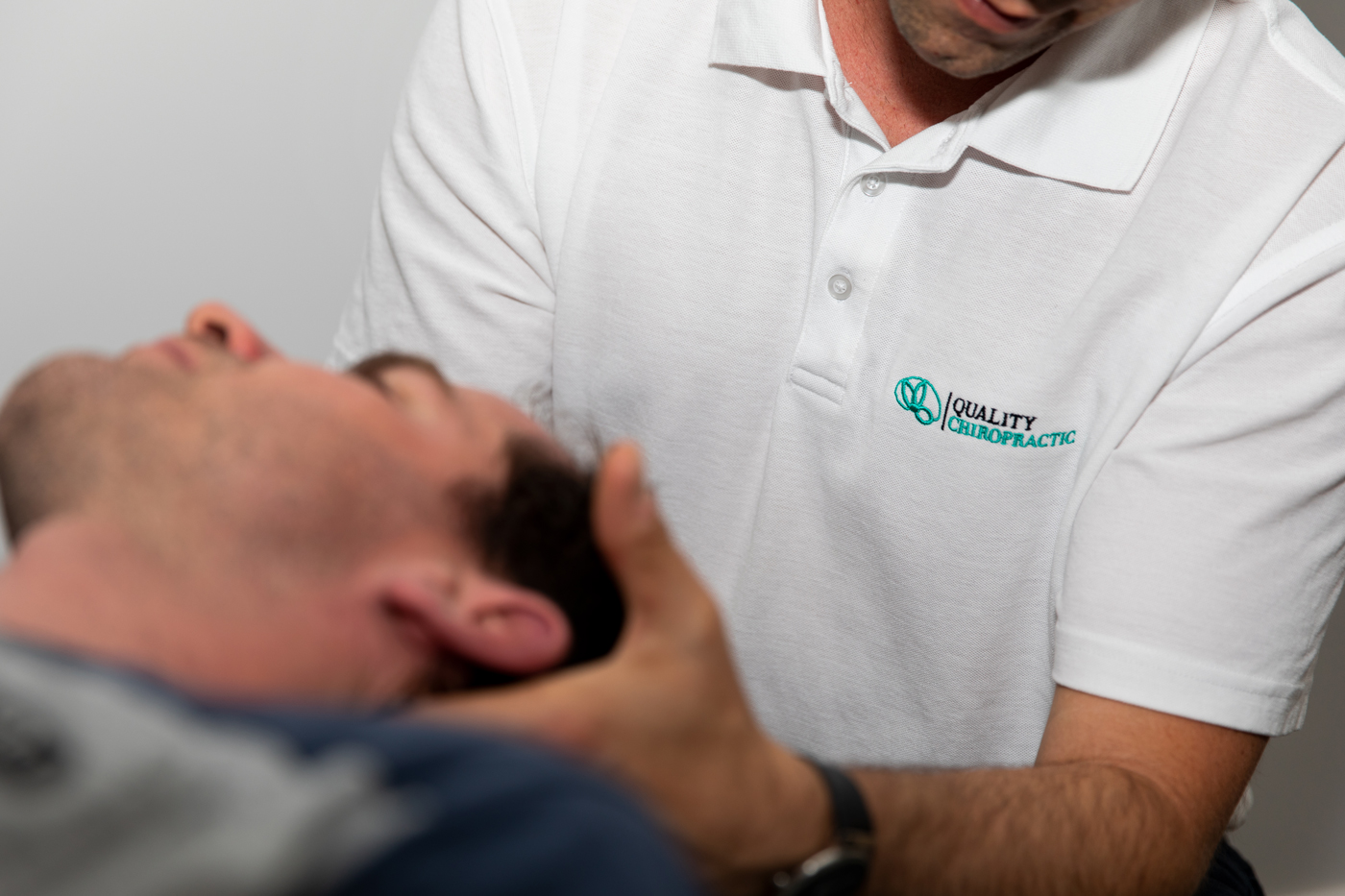Headaches: symptoms, causes and Chiropractic care. Honestly, this is not an easy topic to write about because there’re so many different things that can cause someone to get a headache. It’s rare for there to be just one simple...
Headaches: symptoms, causes and Chiropractic care.
Honestly, this is not an easy topic to write about because there’re so many different things that can cause someone to get a headache. It’s rare for there to be just one simple reason to explain why a person gets headaches. Also, sometimes, finding the cause/s of someone’s headaches can be a planned process of elimination.
Interestingly, did you know that there are no pain receptors in our brains? Therefore, if our brains can’t ‘feel’ pain, what causes us to sense a head-ache?
What causes a headache?
Our nervous systems need 3 important bits of ‘fuel’ to stay healthy:1
A good amount of oxygen in our blood. A sustaining amount of glucose in our cells. Regular activation of our brains, muscles and joints.Therefore, your nervous system can stay (fairly) healthy if it gets good and regular amounts of oxygen, glucoseand activation.
But what happens if our bodies start to lack one or more of the main bits of ‘fuel’ which our nervous systems need to stay healthy and adaptive to our environments?
When your nervous system isn’t getting enough amounts of healthy ‘fuel’ (such as oxygen), it sends stress signals to your brain saying, “Danger! Something doesn’t feel right.”
Your brain then reads these messages, and it reacts accordingly by triggering an ‘alarm’. Unfortunately, this ‘alarm’ can cause you to get a headache.
There are many things that can drain your body’s ‘fuel’ supplies and cause your brain to trigger an ‘alarm’ which can give you a headache:
Your joints, tendons and ligaments might not be moving well. You might have a lot of (unknown) inflammation within your body. You might have ‘angry’ structures in your head that are sending stress signals to your brain, such as: the blood vessels, the meninges, the scalp, and the skull bones.Interestingly, a head injury, such as a concussion (or a big, “Knock to the head”), is one of the most complicated and easy ways to drain your body’s ‘fuel’ supplies, naturally.2
Types of headaches.
There are many different types of headaches but to try and keep things simple, I’m only going to write about some of the more common headache diagnoses:
A cluster headache.
Typically, a cluster headache is known to cause someone to get a severe, steady and boring-like pain behind one of their eyes and it can last from 30-minutes to 90-minutes. Also, it’s common for people to get ‘flight and fight’ symptoms, too:
They may get tearing in an eye and/or eye redness. They may get Horner’s syndrome. One side of their face may become flushed. They might get nasal congestion (or blocked sinuses). They may start sweating for no real (known) apparent reason.Additionally, there seems to be a bit of a formula to work out if someone might be suffering a cluster headache: people who get cluster headaches tend to get them once to several times per day every day over a few weeks and then they disappear for several months.3
A headache in the back of the head.
A cervicogenic headache can give someone a headache in the back of their head.
A cervicogenic headache tends to be caused by a lack of communication between your upper neck nerves (or C1, C2 and C3) and the soft tissue structures that make up your neck (such as your muscles, tendons and ligaments). So, it’s almost as if your neck ‘forgets’ how to move properly because it’s not getting good ‘fuel’.3
For example: cars need fuel to work properly but when a car’s tank runs out of petrol it can’t function well until its petrol tank is filled up with fuel, again. Well, in many ways, a car’s engine works very similarly to our bodies; that is, if we don’t have a healthy supply of fuel, we don’t work properly which can cause us to get a headache.
Therefore, the pain of a cervicogenic headache starts in your neck and it travels up to the back of your head and/or face.
Also, other conditions that can cause someone to get a headache in the back of their head are: suboccipital neuralgia, and trigeminal neuralgia.3
A TMJ headache.
People who have temporomandibular joint (TMJ) issues (or jaw joint issues) are prone to developing headaches.
Also, if someone has a TMJ problem, they may get other symptoms, too:4
They might feel pain in their jaw joint/s. Their jaw joint/s might grind or click whilst they try to chew food or talk. They may get ear pain and/or ringing in the ears (or tinnitus). They may get neck pain. They may get dizziness episodes.A migraine headache.
There appears to be a bit of a genetic (or a family history) component to possibly explain why some people are susceptible to getting migraines.
People who get migraines tend to experience altered brain states because their nervous systems aren’t getting enough amounts of healthy ‘fuel’. Also, a person’s migraine symptoms will really depend on which part of their brain/nervous system is running low on ‘fuel’.
For example, a person could get visual disturbances (which is known as an aura) if their brain’s occipital lobe isn’t getting enough ‘fuel’, or they might get, say, face pain or nausea if their brainstem isn’t getting proper ‘fuel’.5
There are 4 things that can cause someone’s ‘fuel’ reserves to drop and trigger them to get a migraine:5
They may have muscle and joint (or musculoskeletal) stress. They may have hormonal stress. They may have nutritional (or certain food intolerance) stress. They may have nervous system (or neurological) stress.Also, it’s very possible for someone to have all of these 4 things happening to them at the same time. So, it’s easy to see how one thing can lead to the development of another thing and then, before you know it, you have many factors that need to be treated (or unravelled, like string) before someone’s headaches start to feel better.
When to worry about a headache.
There are a number of things that you should be aware of to tell you that your headache symptoms might not be safe and that you should get medical advice, immediately:3
You get a sudden (or an ‘explosive’) onset of a severe headache that you’ve never had before. Your headache gets worse when you’re lying down during the night. Your headache is accompanied by a fever, a really stiff neck and you become sensitive to light. Your headaches are accompanied by: pain and tenderness over both of your temple regions, jaw pain (especially whilst you’re eating or talking), and visual disturbances (for example, you might start to get ‘double vision’ or lose the sight in either 1 or both of your eyes).Chiropractic care and headache treatment.
When it comes to people getting treated for complications of muscle and/or joint dysfunction, such as cervicogenic headaches and migraines, research6-8 shows that chiropractic care is just as an effective treatment option (or, sometimes, even more of an effective treatment option) compared to drugs and other therapy alternatives.
However, of course, there’s always room for improvement and there still needs to be more research done to work out exactly how effective chiropractic care is for other types of headaches, too. Nonetheless, overall, chiropractic care is a safe9-22 treatment option that’s certainly worth people considering trying especially if they suffer from headaches.
References
Kharrazian, Datis. 2013. Why isn’t my brain working? A revolutionary understanding of brain decline and effective strategies to recover your brain’s health. Elephant Press, U.S.A. Joel Brandon Brock, Samuel Yanuck, Michael Pierce, Michael Powell, Steven Geanopulos, Steven Noseworthy, Datis Kharrazian, Chris Turnpaugh, Albert Comey, and Glen Zielinski. The potential impact of various physiological mechanisms on outcomes in TBI, MTBI, concussion and PPCS. Funct Neurol Rehabil Ergon 2013;3(2-3):xx-xx. Blumenfeld, Hal. 2010. Neuroanatomy through Clinical Cases, Second Edition. Sinauer Associates, Inc., U.S.A. Yuanyuan Yin, Shushu He, Jingchen Xu, Wanfang You, Qian Li, Jingyi Long, Lekai Luo, Graham J Kemp, John A Sweeney, Fei Li, Song Chen, Qiyong Gong. The neuro-pathophysiology of temporomandibular disorders-related pain: a systematic review of structural and functional MRI studies. J Headache Pain. 2020 Jun 19;21(1):78. Harcourt, Adam. 2020. Mastering migraine: finally understand migraine, how to correct its 4 main factors and take your life back! Baker & Taylor, U.S.A. Goertz, CM., Long, CR., Vining, RD., Pohlman, KA., Walter, J., and Coulter, I. Effect of usual medical care plus chiropractic care vs usual medical care alone on pain and disability among US service members with low back pain: A comparative effectiveness clinical trial. JAMA Netw Open. 2018 May 18;1(1):e180105. Bronfort, G., Evans, R., Anderson, A., Svendsen, K., Bracha, Y., and Grimm, R. Spinal manipulation, medication, or home exercise with advice for acute and subacute neck pain: a randomized trial. Annals of Internal Medicine. 2012;156(1):1-10. Hurwitz, E., Carragee, E., van der Velde, G., Carroll, L., Nordin, M., Guzman, J., Peloso, PM., Holm, L., Côté, P., Hogg-Johnson, S., Cassidy, JD., and Haldeman, S. Treatment of Neck Pain: Noninvasive Interventions. Results of the Bone and Joint Decade 2000–2010 Task Force on Neck Pain and Its Associated Disorders. February 15, 2008 – Volume 33 – Issue 4S – p S123-S152. Todd, AJ., Carroll, MT., Robinson, A.,and Mitchell, E. Adverse Events Due to Chiropractic and Other Manual Therapies for Infants and Children: A Review of the Literature. J Manipulative Physiol Ther. Nov-Dec 2015;38(9):699-712. Alcantara, J., Ohm, J., and Kunz, D. The safety and effectiveness of pediatric chiropractic: a survey of chiropractors and parents in a practice-based research network. Explore. 2009;5:290-295. Doyle, MF. Is chiropractic paediatric care safe? A best evidence topic. Clinical Chiropractic. Volume 14, Issue 3, September 2011, Pages 97-105. Rafter, N., Hickey, A., Condell, S., Conroy, R., O’Connor, P., Vaughan, D., Williams, D. Adverse events in healthcare: learning from mistakes. QJM. 2015 Apr;108(4):273-7. Rubinstein, Sidney M. Adverse events following chiropractic care for subjects with neck or low-back pain: do the benefits outweigh the risks? J Manipulative Physiol Ther 2008;31:461-464. Carnes,, Mars, Thomas S., Mullinger, B., Froud, R., Underwood, M. Adverse events and manual therapy: a systematic review. Man Ther. 2010 Aug;15(4):355-63. Jevne, J., Hartvigsen, J., Christensen, HW. Compensation claims for chiropractic in Denmark and Norway 2004-2012. Chiropr Man Therap. 2014 Nov 7;22(1):37. Gouveia LO., Castanho P., Ferreira JJ. Safety of chiropractic interventions: a systematic review. Spine (Phila Pa 1976). 2009; 34(11):E405-13. Hebert, JJ., Stomski, NJ., French, SD., Rubinstein, SM. Serious Adverse Events and Spinal Manipulative Therapy of the Low Back Region: A Systematic Review of Cases. J Manipulative Physiol Ther. Nov-Dec 2015;38(9):677-691. Walker, BF., Hebert, JJ., Stomski, NJ., Clarke, BR., Bowden, RS., Losco, B., French, SD. Outcomes of usual chiropractic. The OUCH randomized controlled trial of adverse events. Spine (Phila Pa 1976). 2013 Sep 15;38(20):1723-9. Makary, MA., Daniel, M. Medical error-the third leading cause of death in the US. BMJ. 2016 May 3;353:i2139. Classen, DC., Resar, R., Griffin, F., Federico, F., Frankel, T., Kimmel, N., Whittington, JC., Frankel, A., Seger, A. and James, BC. ‘Global Trigger Tool’ Shows That Adverse Events In Hospitals May Be Ten Times Greater Than Previously Measured. Health Affairs (Project Hope). 2011;30(4):581-589. Cassidy, JD., Boyle, E., Côté, P., He, Y., Hogg-Johnson, S., Silver, FL., Bondy, SJ. Risk of vertebrobasilar stroke and chiropractic care: results of a population-based case-control and case-crossover study. J Manipulative Physiol Ther. 2009 Feb;32(2 Suppl):S201-8. Kosloff, TM., Elton, D., Tao, J., Bannister, WM. Chiropractic care and the risk of vertebrobasilar stroke: results of a case-control study in U.S. commercial and Medicare Advantage populations. Chiropr Man Therap. 2015 Jun 16;23:19.
Dean Roods | CHIROPRACTOR
Lorem ipsum dolor sit amet, consectetur adipiscing elit, sed do eiusmod tempor incididunt ut labore et dolore magna aliqua. Ut enim ad minim veniam, quis nostrud exercitation ullamco laboris nisi ut aliquip ex ea commodo consequat. Lorem ipsum dolor sit amet, consectetur adipiscing elit, sed do eiusmod tempor incididunt ut labore et dolore magna aliqua. Ut enim ad minim veniam, quis nostrud exercitation ullamco laboris nisi ut aliquip ex ea commodo consequat.
Lorem ipsum dolor sit amet, consectetur adipiscing elit, sed do eiusmod tempor incididunt ut labore et dolore magna aliqua. Ut enim ad minim veniam, quis nostrud exercitation ullamco laboris nisi ut aliquip ex ea commodo consequat.











